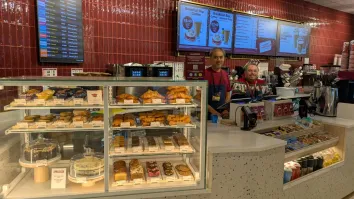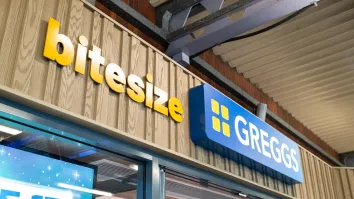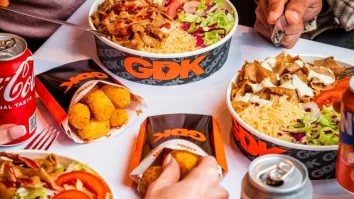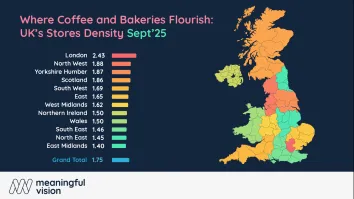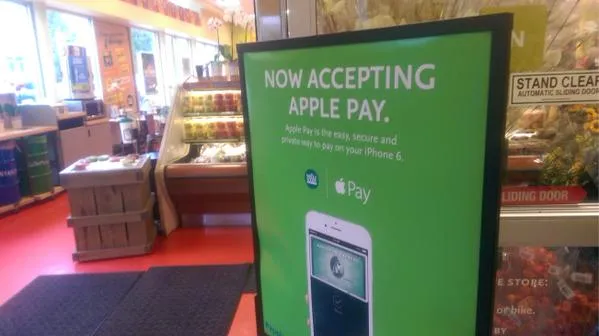
EXCLUSIVE: A User's Guide to Apple Pay: All You Need to Know to Get Started
Following the recent announcment that Apple Pay was to hit our shores, we spoke with Dennis Jones, CEO of Judo Payments, official payments platform provider for the technology, to find out how it works, what it means for QSR businesses and what you need to do to get started.
What is Apple Pay?
Apple Pay is an easy, secure, private way for customers to pay while they’re dining in or ordering through an app. It is currently available on devices that has a secure element chip, which is a hardware chip dedicated to securely storing card information. These devices include iPhone 6, 6 Plus, iPad Air 2, iPad mini 3, and the Apple Watch (when paired with an iPhone 5 or 6)
How does Apple Pay work?
Dining In
For bills up to £20 (to be raised to £30 in September), customers can use their eligible Apple devices to make contactless payment. They first select a debit/credit card on their device, and then tap the device against a compatible contactless card terminal, while placing their finger on the Touch ID fingerprint scanner to authenticate the payment.
For users that are paying with their default card, there’s no need to even wake your display thanks to the innovative Near Field Communication (NFC) antenna, which can automatically detect the presence of contactless payment terminals and trigger the Apple Pay interface.
On Apple Watch
Customers paying with Apple Watch can double-click the side button and hold the front of Apple Watch up to a contactless reader. A beep confirms that payment information has been transmitted.
Order within app
Paying within apps is even simpler and quicker than via NFC, with Apple Pay-enabled apps displaying a one-click ‘Buy now with Apple Pay’ button. As with NFC, payments are authorised with Touch ID. Unlike with NFC, there’s no cap on the size of payments.
How do QSRs get started with Apple Pay?
Dining in
- If the restaurant is already using contactless card terminals, they’re already poised to take Apple Pay and merely need to sign up.
- If not, businesses have to contact a supporting acquirer to upgrade their card terminals.
Ordering within an app
- As with facilitating in-store payments, companies need to be working with an acquirer that supports Apple Pay
- Then QSRs needs to set up an account with a payment gateway that provides the necessary development tools to integrate Apple Pay into your app
Where can Apple Pay be used?
Leading QSRs which are already signed up to use Apple Pay in-store include McDonald's, Subway and Nando’s. As customers become used to paying with Apple Pay for wider products and services - and non-QSRs signed up include BP, Transport for London and Waitrose - more QSRs are expected to sign up.
Food and beverage apps signed up to Apple Pay include Five Guys, Hungry House, Harris + Hoole and ocado. You can find the full list of those currently signed-up here.
How secure is Apple Pay?
One of the key components of Apple Pay’s security is that transaction information and card numbers are not saved on its servers. Instead, Apple Pay uses tokenisation, which creates and assigns a number or token known as a Device Account Number that replaces the needs to store more sensitive card details.
The Device Account Number is encrypted and stored in the Secure Element, the smart chip in eligible devices which securely manages information. When a payment is initiated, only the Device Account Number is shared with the retailer or merchant, removing the need for direct access to card details.
Which acquiring banks support Apple Pay?
Banks confirmed to support the service from day one of Apple Pay’s UK launch are American Express, First Direct, HSBC, Nationwide, Natwest, RBS, Santander and Ulster Bank.
Those currently developing Apple Pay support include Bank of Scotland, Halifax, Lloyds, M&S Bank, MBNA and TSB.
Why provide Apple Pay?
Simply put, Apple Pay provides an easier, faster and more secure way to pay, improving customer experiences whether they’re in-store or within an app. Crucially for app users, the improved efficiency of paying for goods and services can reduce checkout abandonment.
This efficiency is achieved by no longer requiring customers to enter or re-enter payment and contact information and the Touch ID-enabled payment method is secure, whilst eliminating the need to remember passwords.
In Q1 of 2015 alone, Apple sold 74.5m iPhones and research from Kantar shows that as of May 2015, the iPhone 6 and 6 Plus - which can use Apple Pay via NFC - constitute 18% of all iPhones in the states. Crucially for Apple Pay’s adoption within apps, 64% of iPhones in use are iPhone 5 or later models, leading to 46% of US owners of Apple Pay compatible devices successfully using the payment method as of May this year. 63 per cent of these users say they use it at least weekly.
The UK’s pre-existing success with contactless payments adoption suggests a strong likelihood of higher and faster rate of adoption for Apple Pay which QSRs are in a great position to take advantage of.


